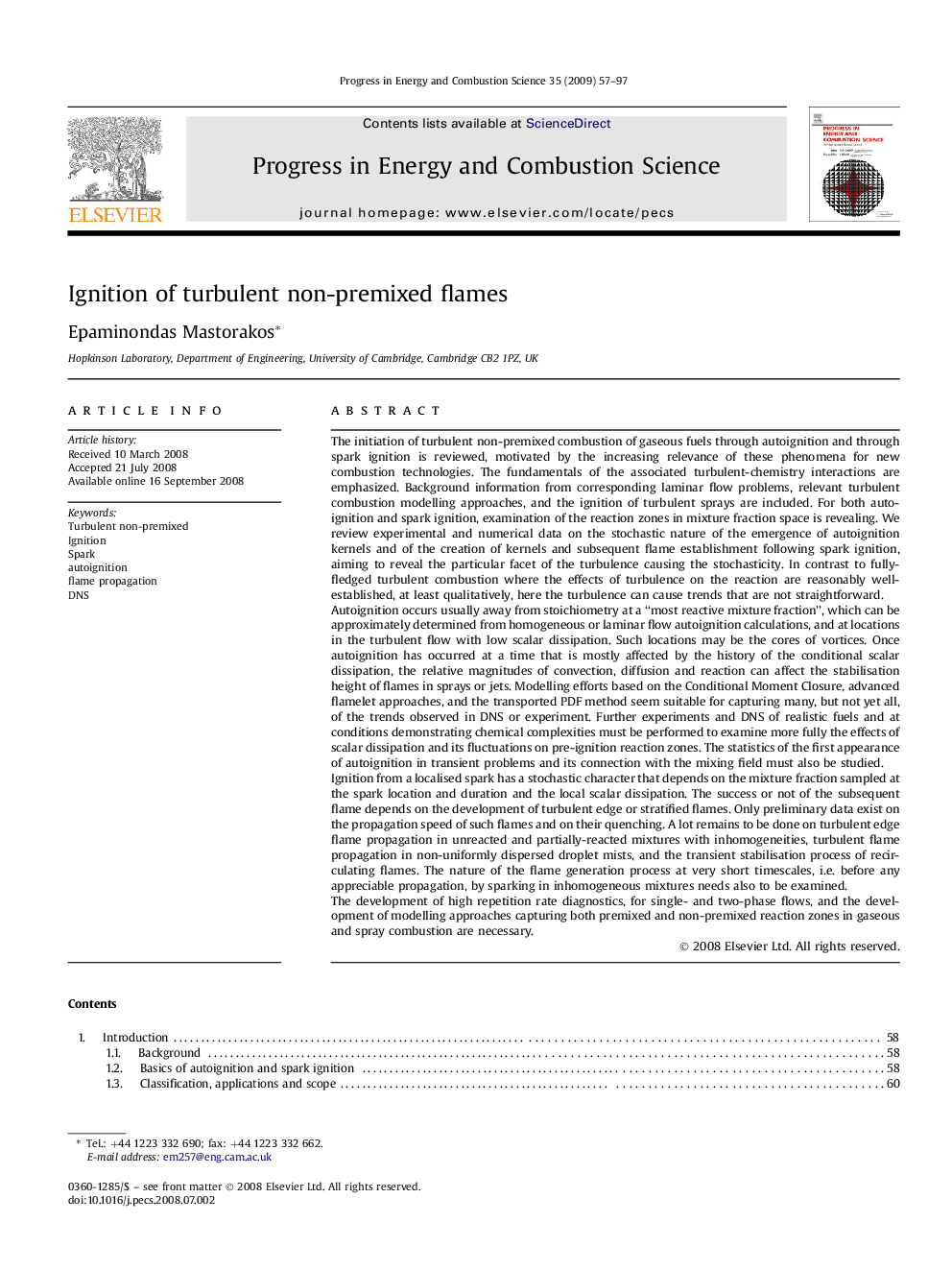| Article ID | Journal | Published Year | Pages | File Type |
|---|---|---|---|---|
| 241744 | Progress in Energy and Combustion Science | 2009 | 41 Pages |
The initiation of turbulent non-premixed combustion of gaseous fuels through autoignition and through spark ignition is reviewed, motivated by the increasing relevance of these phenomena for new combustion technologies. The fundamentals of the associated turbulent-chemistry interactions are emphasized. Background information from corresponding laminar flow problems, relevant turbulent combustion modelling approaches, and the ignition of turbulent sprays are included. For both autoignition and spark ignition, examination of the reaction zones in mixture fraction space is revealing. We review experimental and numerical data on the stochastic nature of the emergence of autoignition kernels and of the creation of kernels and subsequent flame establishment following spark ignition, aiming to reveal the particular facet of the turbulence causing the stochasticity. In contrast to fully-fledged turbulent combustion where the effects of turbulence on the reaction are reasonably well-established, at least qualitatively, here the turbulence can cause trends that are not straightforward.Autoignition occurs usually away from stoichiometry at a “most reactive mixture fraction”, which can be approximately determined from homogeneous or laminar flow autoignition calculations, and at locations in the turbulent flow with low scalar dissipation. Such locations may be the cores of vortices. Once autoignition has occurred at a time that is mostly affected by the history of the conditional scalar dissipation, the relative magnitudes of convection, diffusion and reaction can affect the stabilisation height of flames in sprays or jets. Modelling efforts based on the Conditional Moment Closure, advanced flamelet approaches, and the transported PDF method seem suitable for capturing many, but not yet all, of the trends observed in DNS or experiment. Further experiments and DNS of realistic fuels and at conditions demonstrating chemical complexities must be performed to examine more fully the effects of scalar dissipation and its fluctuations on pre-ignition reaction zones. The statistics of the first appearance of autoignition in transient problems and its connection with the mixing field must also be studied.Ignition from a localised spark has a stochastic character that depends on the mixture fraction sampled at the spark location and duration and the local scalar dissipation. The success or not of the subsequent flame depends on the development of turbulent edge or stratified flames. Only preliminary data exist on the propagation speed of such flames and on their quenching. A lot remains to be done on turbulent edge flame propagation in unreacted and partially-reacted mixtures with inhomogeneities, turbulent flame propagation in non-uniformly dispersed droplet mists, and the transient stabilisation process of recirculating flames. The nature of the flame generation process at very short timescales, i.e. before any appreciable propagation, by sparking in inhomogeneous mixtures needs also to be examined.The development of high repetition rate diagnostics, for single- and two-phase flows, and the development of modelling approaches capturing both premixed and non-premixed reaction zones in gaseous and spray combustion are necessary.
